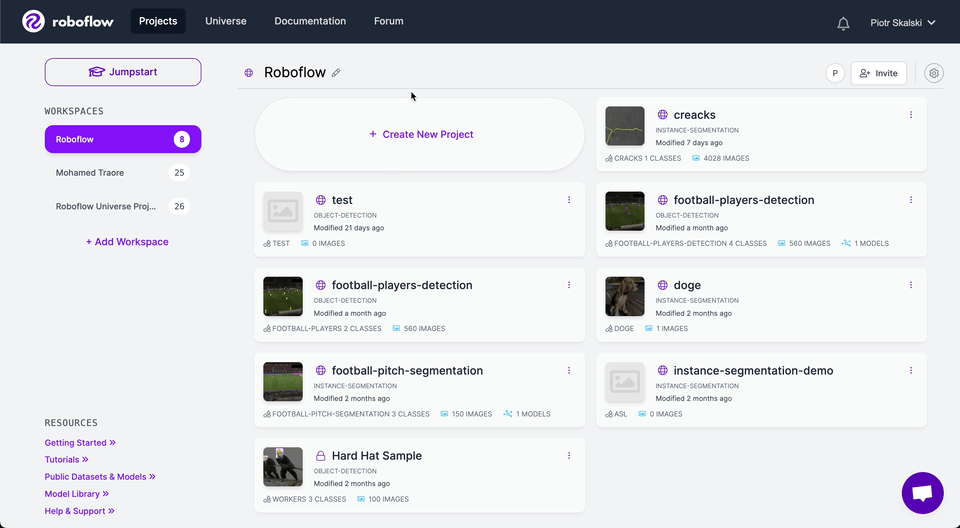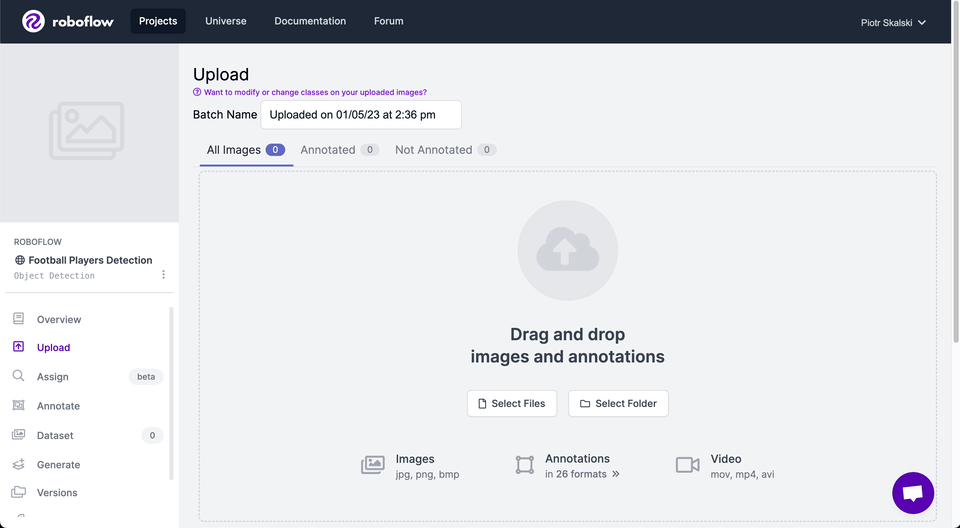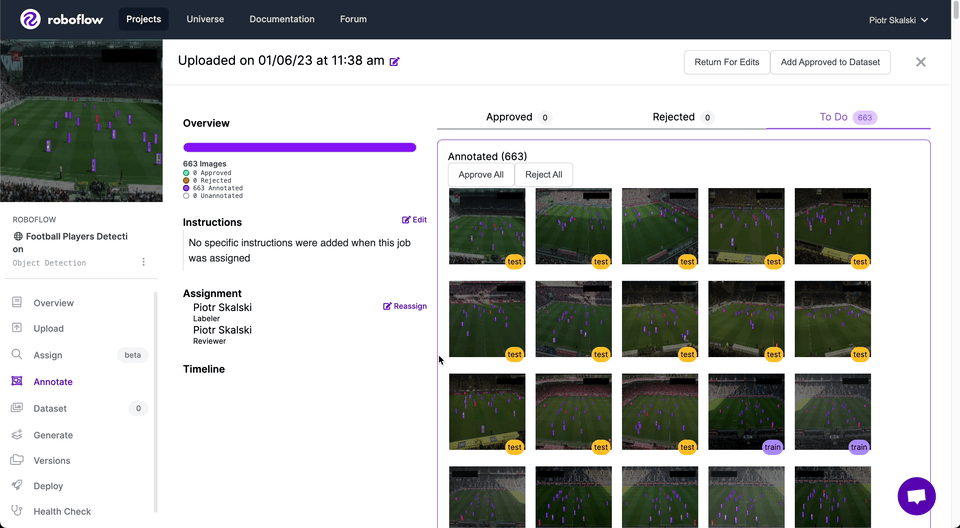This project aimed to build a real-time fire detection system using YOLOv8.
To train the YOLO for a fire detection system, we should provide a dataset for this purpose. You can use Roboflow. Roboflow is a collection of open-source computer vision datasets and APIs.
Building a custom dataset can be a painful process. It might take dozens or even hundreds of hours to collect images, label them, and export them in the proper format. Fortunately, Roboflow makes this process as straightforward and fast as possible. Let me show you how!
Before you start, you need to create a Roboflow account. Once you do that, you can create a new project in the Roboflow dashboard. Keep in mind to choose the right project type. In our case, Object Detection.
Next, add the data to your newly created project. You can do it via API or through our web interface.
If you drag and drop a directory with a dataset in a supported format, the Roboflow dashboard will automatically read the images and annotations together.
If you only have images, you can label them in Roboflow Annotate.
Now that we have our images and annotations added, we can Generate a Dataset Version. When Generating a Version, you may elect to add preprocessing and augmentations. This step is completely optional, however, it can allow you to significantly improve the robustness of your model.
Once the dataset version is generated, we have a hosted dataset we can load directly into our notebook for easy training. Click Export and select the YOLOv8 Oriented Bounding Boxes dataset format.
For train, validation, or inferences from the model, you can use the YOLO command. Read more about CLI in Ultralytics YOLO Docs








